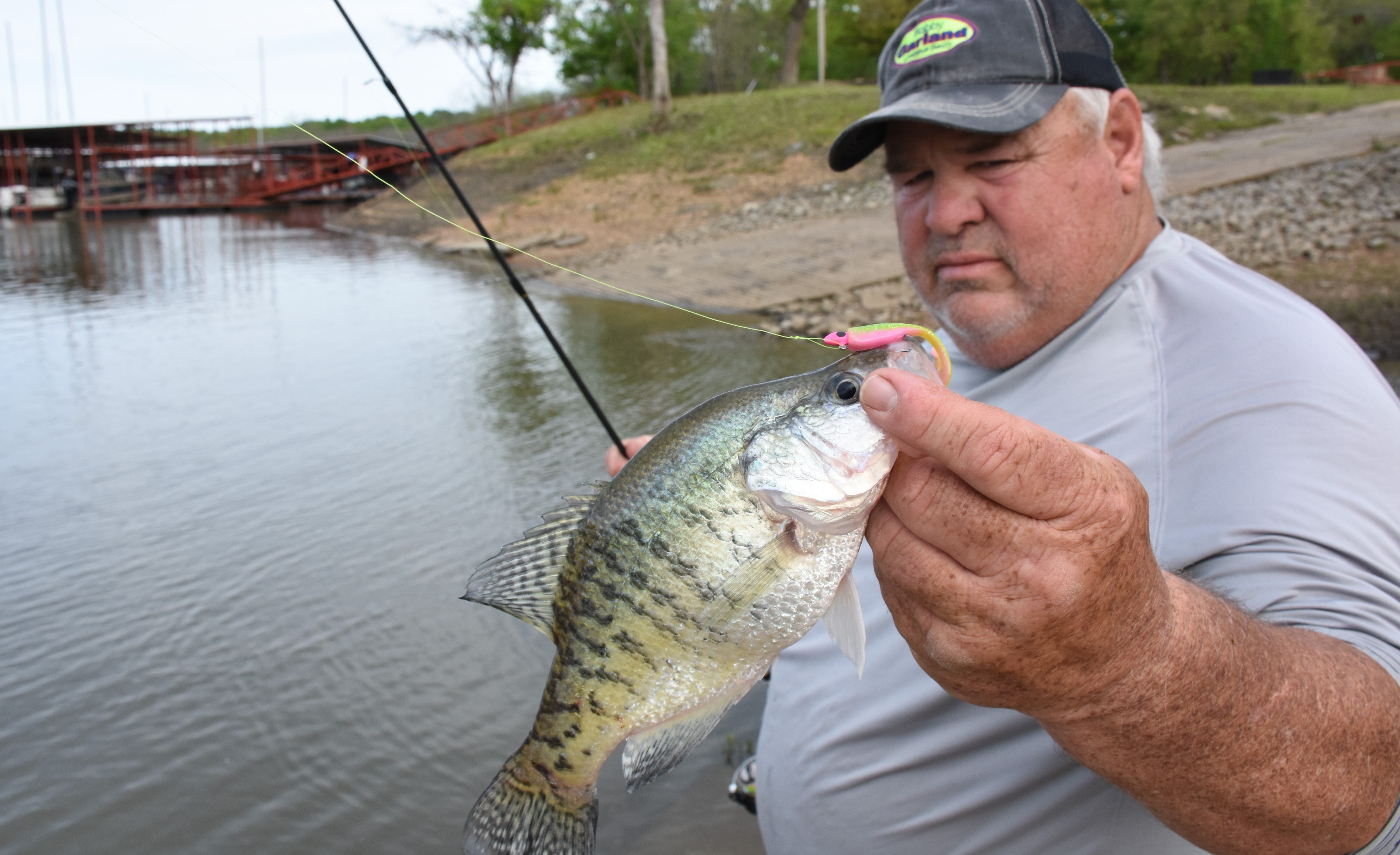- Nov 7, 2023
The 4 Best Locations for Catching Crappie from the Bank
No boat? No problem! Fall and early winter put some of the best crappie fishing of the year within casting distance of the shore. These places provide the highest probability of success.
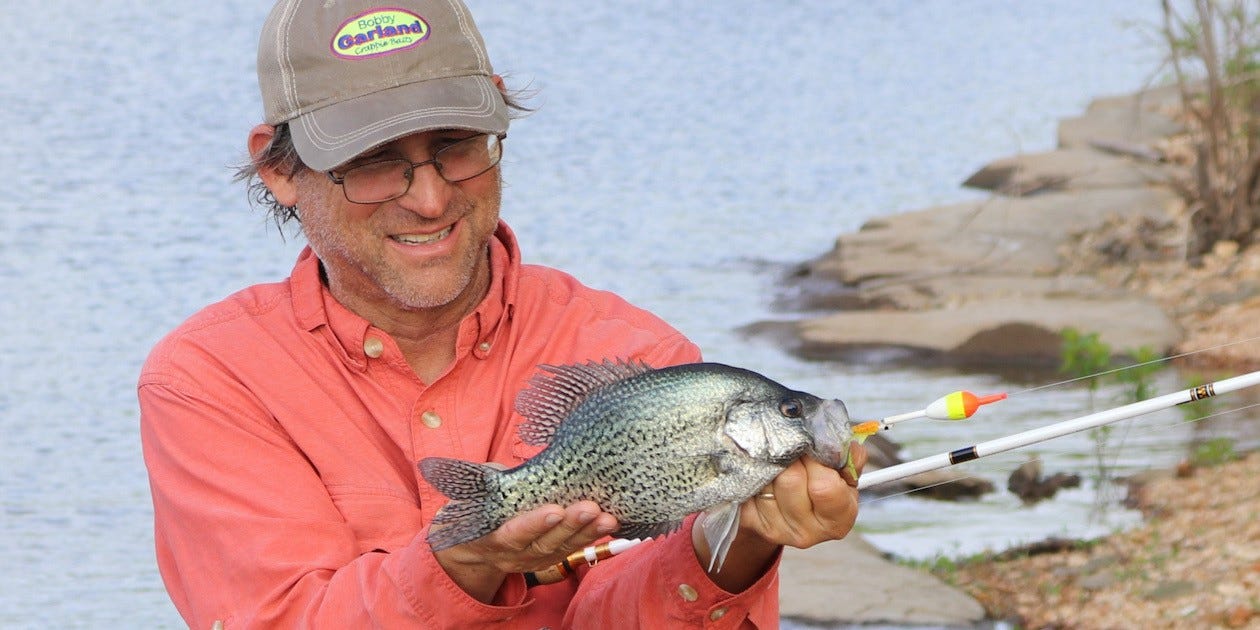

Crappie are among the most popular gamefish to pursue from the bank, but in the minds of many anglers shore fishing for crappie is only something to do in the spring, when the crappie move shallow to spawn. That’s an oversight. Many crappie move shallow again during fall and early winter because of plentiful forage and comfortable water temperatures in that zone, again opening outstanding opportunities to target and catch them without the aid of a boat.
Crappie can be caught from the bank in many areas this time of year, but certain types of locations are far more likely than others to yield good fishing action. We’ll look at four types of places that tend to be especially good during fall and early winter and will discuss top strategies for effectively fishing each.
Bridges
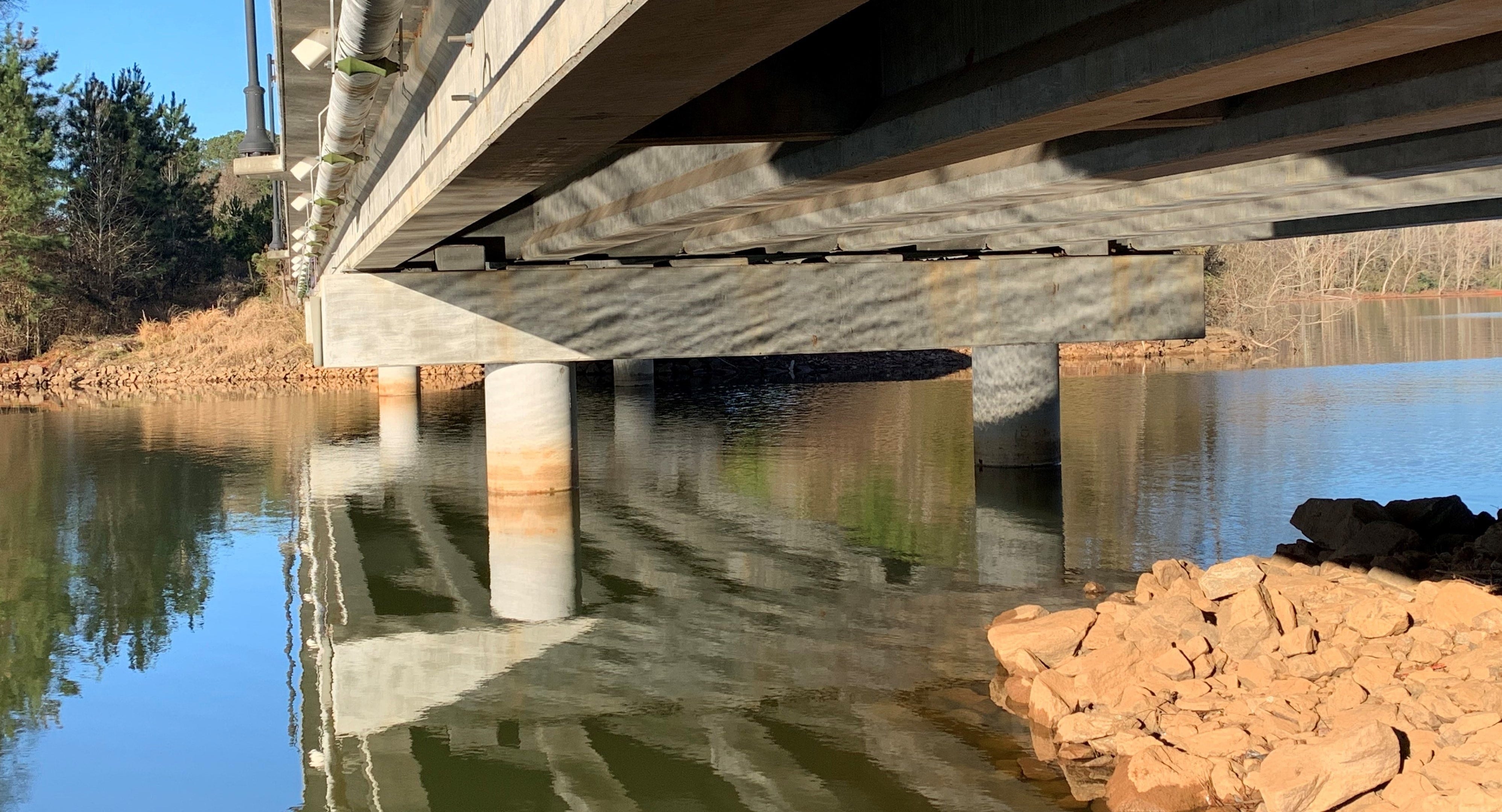

Bank section at the ends of bridges bring together many elements that make them great places to catch crappie from shore. They’re so popular during spring that the number of cars parked near certain bridges provides a great index to the crappie bite. The same values exist during autumn and early winter, but with minimal competition from other anglers.
Bridges tend to be built at pinch points, concentrating fish and putting creek and river channels nearby or even within casting range of the bank. Most offer a range of depths that can be plied and plenty of good structure to hold fish, including rocky banks and the piers and pilings that support the bridge. Along with providing structure for crappie to relate to at various depths, the pilings and piers create
The best bridges for fall fishing tend to be those that span creek arms of reservoirs, with bridges at the lower ends of creeks tending to hold the most fish as fall gives way to early winter. Looking at the satellite view with online mapping can help you identify the bridges that are most apt to produce. The same imagery reveals things like the location of the channel and where points stretch out, which can help you work any given bridge more effectively. If a bridge can be accessed at either end, the end the channel runs closest to typically will provide the best prospects.
Often the best bridge fishing strategy is simply to cast or pitch a crappie jig and swim it back or let it swing down close to structure, experimenting with depths and retrieve speeds. If that approach doesn’t trigger strikes or if the bite wanes, adding a slip float will allow you to cast close to support structures and make slow and targeted presentations.
Riprap Banks
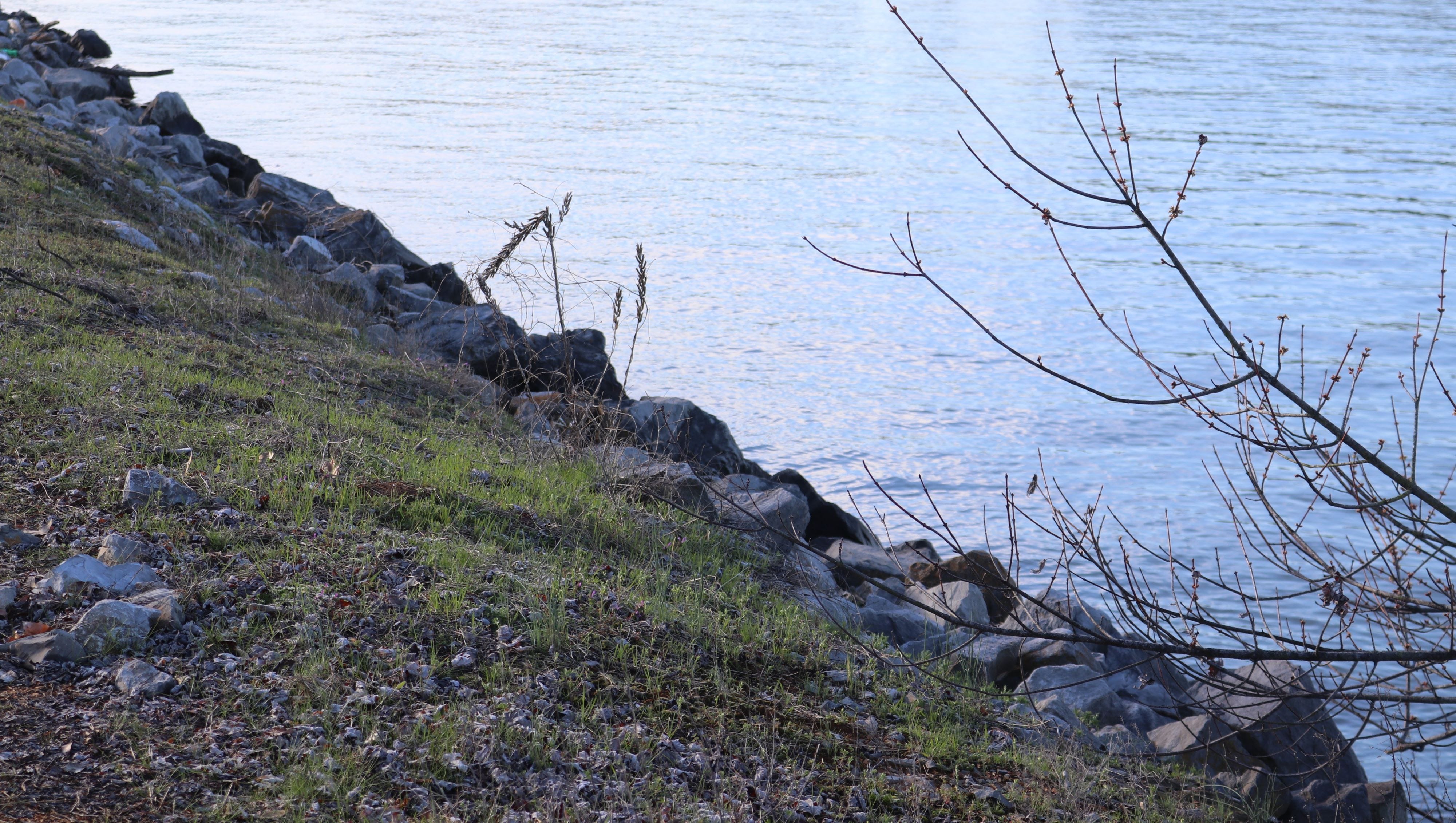

Commonly adjacent to bridges along causeways, riprap banks frequently hold excellent numbers of fall crappie with the fish within easy casting range or even within a rod’s length of the edge. Shad and minnows often orient to riprap banks, so the crappie find plentiful food and outstanding cover in one place. Riprap banks can be awkward to walk on and demand added caution, but often they provide extended areas of high-quality crappie habitat that can be reached on foot.
While riprap banks tend to look uniform at a glance, certain areas almost always hold the most fish. At times, finding key areas requires working the bank methodically. Often, clues exist. Small distinctions, like a change in the bank slope (which normally continues beneath the surface), a runoff pipe, a point or indention in an otherwise straight bank, a windbreak, a water color change or the channel cutting near a spot can make a big difference. Again, looking at satellite imagery can help you identify likely key areas and may reveal things you cannot see from the bank. With causeways, the end closest to the bridge tends to be best.
Two approaches often work very well for fishing from riprap. The first is to cast a bait with an active swimming tail, such as a Bobby Garland Stroll’R or Hyper Grub, and reel steadily, making some casts parallel to the riprap, some straight out and some at in-between angles and varying speeds to hit different depths. This is a great searching strategy and works best when the crappie are relating to baitfish and aren’t necessarily tight to the rocks. It’s extra good on unseasonably warm days and when the water is fairly clear.
When the fish are tighter to the rocks, a better approach is to use a bait with a more subtle tail action, like a Baby Shad or Slab Slay’R and to either dip the bait straight down from the tip of the rod and slowly walk the bank to cover water or to pitch the bait a short distance and let it swing to straight down from the rod tip. For either, a long rod provides the most reach and control, and the ideal is to minimize added action and work the bait very near to the rocks.
Docks & Piers
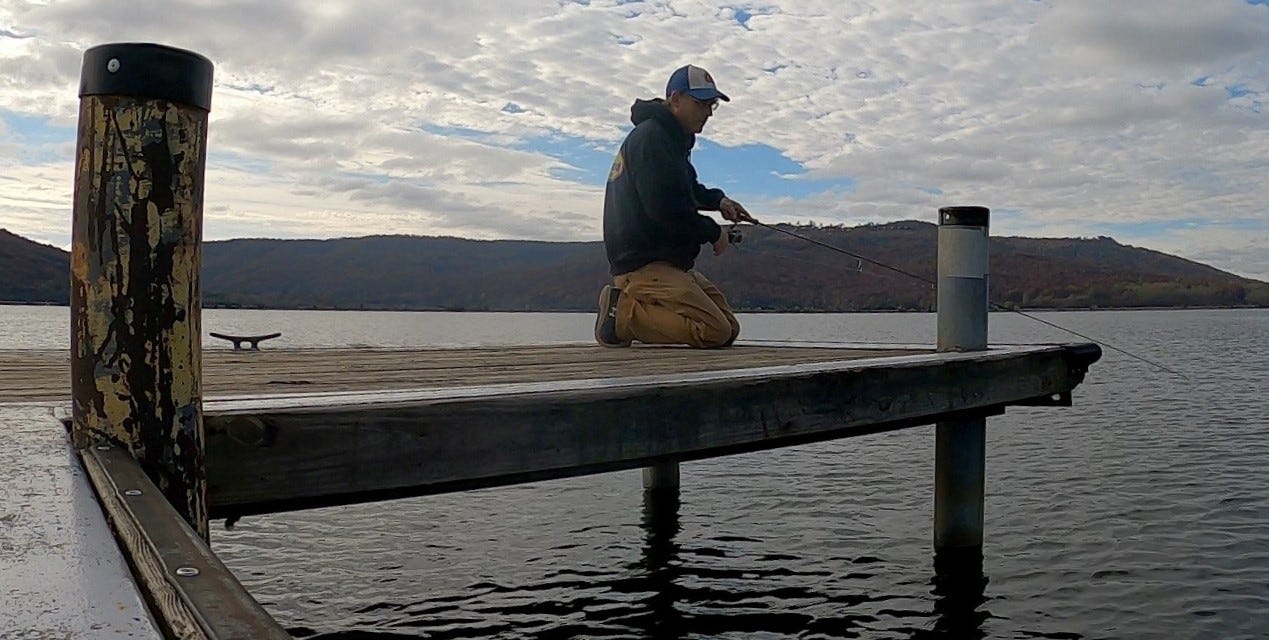

Docks and piers provide direct access to crappie because they span a range of depths and provide structure for the fish to relate to, often right below your feet. Complex dock structures, such as marina docks, are crappie condominiums that can serve up great fishing day after day, especially if they are maintained for fishing with brush and other cover added or lights on the water. As a disclaimer, we’ll acknowledge that a dock is not part of the bank, but we’re including this fishing because you can walk to the fishing spot, basically as an extension of the bank.
While many docks are private with no open public fishing access, many in parks or other recreation areas provide access to good fishing and some marinas allow paid access for a day of fishing, allow access to campers or cabin renters on property, and many dock owner will grant fishing permission if asked. When piers or docks in state parks or on fisheries agency managed access areas are dubbed as “fishing piers,” they often have been placed strategically to reach a good range of depths and have brush or other fish attractors beneath them or within easy reach.
Because dock crappie typically orient to the actual dock structure or to brush sunk beside it, a straight vertical approach or a short pitch that allows a bait to swing to a vertical position is tough to top. Bottom depth and fishing depth can both be very important, so it’s important to experiment with depths and locations on a dock and to pay attention to details anytime a fish hits.
Less added action is almost always best for dock crappie, and that becomes extra true as the water cools late in the year. Sometimes just tapping the rod with a finger adds just the right amount of action, or a slight occasional jiggle or slow lift might trigger strikes. Often, though, you can’t beat dropping a Baby Shad to the key depth and holding the rod tip as still as possible until a fish bites.
Swing Banks
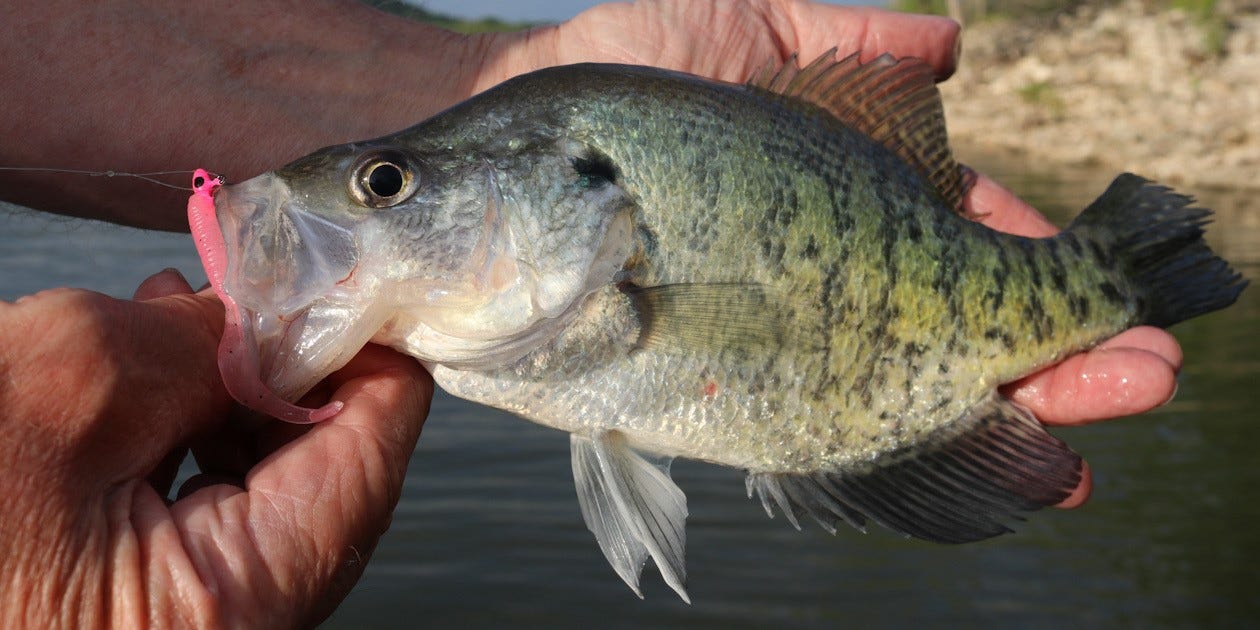

Lacking key physical structures, some of the best areas for catching crappie from the bank this time of year are spots where a creek or river channel swings close to the bank or all the way to the bank. Specifically, the fish tend to hold close to the edge, right where the channel first hits the bank and where it steers away because these zones give them easy access to a range of depths. They may move farther onto the flatter bank during warm spells and drop deeper in the channel during cold snaps, but they won’t roam far from that break.
Identifying likely areas begins with looking at a topographical map and identifying areas where channels swing close to the bank on public land or an area where you have access. From the shore, the slope change along the bank typically makes the specific spot obvious. On steep reservoirs, the transition often is the last spot where you can reasonably stand and fish before the bank gives way to a bluff.
Drawdowns, which are common on many reservoirs during fall and winter, allow access to much more of the bank than normal in many areas because the water’s edge moves away from trees and bushes and other shoreline cover that would prohibit access at full pool.
The best tactics for working swing banks vary substantially by conditions and the character of the river or lake. Among the most consistently productive approaches, though, is to rig a crappie jig beneath a slip float and either let it drift across the area or work the rig slowly with occasional twitches or short pulls followed by significant pauses. A slip float allows you to adjust depths and work the whole transition area until you find the fish then make repeated presentations at the exact same depths.
6 Great Baits for Fall Crappie
